One of the most important things a backpacker can find is a great travel backpack. It holds all your gear, it’s with you almost all the time, and in some bizarre, anthropomorphic way, it’s your best friend. I still remember the feeling of coming back from my first solo backpacking trip, and walking around without a backpack. It felt wrong. Like something was missing.
Over the years, I’ve gone through packs like nobody’s business. I’ve never used the same pack for more than two trips, and no matter how many hours I spend either online or in the store, it seems like finding the right pack is always going to be a horrific ordeal.
Discomfort, poorly designed features, dangly straps, sizing issues, and all manner of nonsense have thwarted my path at every turn. It’s tough finding something that fits you properly, and I think, given the high user ratings of certain packs I hate, maybe I just have a bizarrely crooked spine and it’s not their fault.
But I refuse to let them get away with rant-free ease.
“Travel” packs barely exist
Part of the problem is that, up until very recently, the only options were top-loading hiking backpacks, or wheeled suitcases. Other options like duffel bags or school backpacks exist as well, but these are rarely suitable for round-the-world travel.
But since these were the only options, accepting their flaws was all I could do. And besides, high-quality hiking backpacks will stand up to most abuse, and they’ll be super comfortable if they fit you properly. But they’re not ideally suited for travel. Hiking packs work, but we’ve only been using them because nothing else was better.
The problem(s) with hiking backpacks:
Now don’t get me wrong; hiking backpacks are great, and I’ve used them on plenty of trips. Some designs have none of these flaws; it’s just that they usually do:
- Packing inconvenience: Hiking packs are usually top-loading, cavernous cylinders that swallow your gear and you have to dig everything out to find whatever’s at the bottom. You can mitigate this problem with packing cubes, but suitcase-style openings are so easy to manufacture that it’s insulting how rarely they’re implemented.
- Extraneous strap dangle: Hiking packs have all sorts of compression straps and attachment points. These are useful for walking around, but they’ll get scratched up when you throw them in the luggage compartment for a bus ride. And I’m including shoulder and hip straps here, too. If you ever have to check your bags for a flight, they’ll come out a little more damaged every time.
- No locking mechanism: Top loaders usually use a drawstring opening, which offers no security whatsoever against unscrupulous hostel bunkmates. This problem can be mostly solved with a laptop sleeve that can lock itself to a bed, but lockable zippers would be easier (though I’ve softened this requirement, as zippers can be easily bypassed, even when locked).
And in many cases, plenty of hiking packs have dumb design errors anyway, even if you’re just hiking.
The problem(s) with so-called “travel backpacks:”
Several companies design what they call “travel backpacks,” which have better features, solving some of the problems listed above, but they generally screw things up in the meantime as well:
- Size: They’ll make them so gigantic that you have to check them on a plane. Some of these “travel backpacks” go up to 80 liters. I’ve done RTW travel with 20. The carry-on max of 45 liters is plenty! Who the hell needs 80?!?!
- De-hydration pockets: They’ll skip the damn water bottle side pockets and then where the hell do they go?!?!?
- Filthy dirty lie “panel” loading: They’ll forget to make the suitcase-style opening go all the way around, thus defeating the purpose of the panel in the first place.
Sigh.
Which is why I’m so gleefully pleased that certain companies have been designing travel backpacks. Correctly, I might add.
I don’t know why the other people didn’t bother doing it before.
What the best travel backpacks get right
I’ve compiled a list of some of the best travel backpacks for carry-on use I can find. These packs are made for travelers, not hikers. They’ve got panel-loading convenience, not top-loading caverns; they’ve got lockable zippers, not drawstring uselessness; they’ve got carry-on dimensions, and minimal, hide-away straps, not monstrous bulges and streamers hanging from every angle. They can be carry-ons, or they can be checked luggage, without getting ruined.
Oh, and they’re not ugly. To me, that counts. Who the hell ever thought fluorescent orange was sexy? The 80s? Yeah, stay there.
I’ve organized this list by type. Let’s begin:
Option 1: Full size and full-featured
These packs have everything you could want; maximized dimensions, panel access, a laptop compartment, and lots of internal and external organizational pockets. There’s nothing missing.
1) Tortuga Outbreaker Backpack
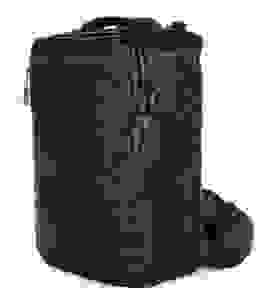
Tortuga was started by a random team of people who found themselves complaining about how they couldn’t find a travel pack that wasn’t awful. They’ve been outfitting nomads ever since.
Expected features on this pack include the full-length panel-loading design, to allow plenty of easy access to everything inside, and the dedicated laptop compartment opens fully flat, so you don’t need to remove your laptop at the security conveyor belt. The inside has even more pockets than the outside, and several compartments (the important ones) feature locking zippers. The “organizer panel” compartment is my favorite feature, with slots for pens, cards, and other small items, and the sheer number of pockets, both inside and out, will offer more organization than anything else you’re going to find.
Tortuga is currently on the third version of this pack, and the new design has a height-adjustable suspension system, meaning it will fit people of all sizes. It also has a seriously padded hip belt, which is rare for these packs, along with a seriously cushioned back panel (with raised ventilation) and shoulder straps. It’s the most heavy-duty suspension system of any travel pack out there, and although it’s significantly heavier as a result, it’s going to excel at carrying heavier loads. They’ve eliminated the ability to stow the shoulder straps and the suitcase handle, however, emphasizing its backpack features exclusively. The side grab handle is also gone, replaced with an extra mesh pocket.
It’s available in 35 and 45 liter capacities, to match the carry-on size requirements of European budget carriers, or North American airlines, respectively. I would say that because the pack features such a heavy-duty suspension system, it actually makes more sense in the 45 liter version. With a full load at that size, you’re definitely going to appreciate the extra cushioning, but at 35 liters, it might feel like overkill, especially since this is one of the heaviest packs out there.
Though Tortuga has released lighter packs, I much prefer the shoulder straps on this model, as they’re much more comfortable on me than either of the new ones they’ve released. If you’re looking for a 45 liter pack, this is as feature-rich as it gets, and definitely one of my top choices at that size.
You can get it from Tortuga. Their blog is also great, with all sorts of packing and travel tips.
Update: I received a test sample of the 35 liter version of this pack, and put it to the test! Check it a detailed review here.
2) Rick Steves Convertible Carry-on
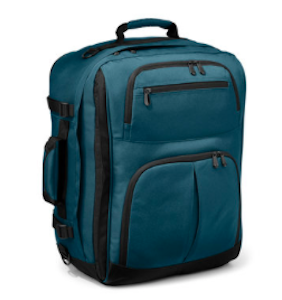
Long before anyone else got started in the carry-on travel backpack game, Rick Steves was galavanting around Europe with his own personal travel gear, designed exactly the way he liked it.
He gave it the features that later became standard on other packs, such as a fully opening panel that allows easy access to everything inside, along with hide-away backpack and waist straps, and suitcase-style grab handles. Exterior pockets are also quite generous, including a dedicated laptop compartment that became a later addition in an updated version.
But it has a few extra touches, such as a separate interior compartment for shoes or dirty clothes, and includes two mesh bags and a removable documents pouch, which you can remove and take with you instead of leaving it in a room. Lastly, the pack is sized to accommodate North American carry-on dimensions, but can expand with a compression zipper in case you stock up on too many souvenirs.
It’s easily the most affordable option on this list, although they do recommend using packing cubes inside to create more structure along the back panel. If you don’t, it can sag quite a bit, putting the weight on your shoulders instead of your hips. The compression straps on the side help with this quite a bit, so just make sure to pack it right, or it’ll feel heavier than it really is.
You can pick it up here.
3) Pacsafe Venturesafe EXP45

Pacsafe is known for its anti-theft approach in everything they do, and this pack is no exception. Not only does it have lockable zippers, but it has zippers that are resistant to the “pen trick,” which is a method thieves can use to break into a pack, even if it’s locked. It’s a huge nuisance that travelers need to know about, but it’s solved here, by placing a redundant set of teeth on the opposite side of each zipper, which prevents a pen from breaking through the chain. It also has slash-proof materials, to prevent hit-and-run theft.
Beyond that, it has a fully-opening suitcase-style main compartment, a laptop sleeve and organizational area in the front, and tuck-away straps. The carry-on dimensions, multiple grab handles, and compression straps make it portable, and versatile.
Pacsafe currently makes this version in a few different sizes, and they have other Venturesafe models available as well (such as the Vibe and X40), but I think this one has the best combination of features, especially in terms of organization. The others are lacking some extra compartments, for example, making this one the most recommendable of their selection. I wouldn’t say it has that much organization, but the organizer panel goes a long way toward keeping everything neat and tidy.
Get it here.
4) GoRuck G2
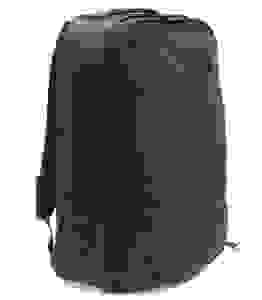
GoRuck has gained something of a reputation for designing some of the longest-lasting gear you can find, built for crazy endurance events and military use. They have packs of several different sizes (including multiple capacities, even if the packs have the same name), but the 40 liter G2 is the one I’m highlighting here.
The pack features a fully panel-loading design, a separate laptop compartment, and another exterior panel-loading compartment for extra organization. It also has those webbing loops all over the place for adding extra accessories or lashing gear to the outside, including a separately available padded hip belt, which I would call a necessity if you’re going for the 40 liter version. The sternum strap is also a separate accessory, so be sure to pick that up if you need it. You can tell it was originally designed for super tough, muscular guys, but it’s nice how they’ve accommodated scrawny weaklings with those extra touches.
As for the downside, the heavy-duty materials and construction make this pack heavy, and pricy…in fact it’s the heaviest and most expensive option listed here, but if you’re big enough to handle the heavier load and you want something that’ll pretty much last forever, the G2 is the one that’ll handle it.
The newly-developed G3, at 45 liters and with an integrated hip belt, nearly made the list here, but the slightly smaller G2 has that extra outside compartment for greater organization, so it just edges out the victory, at least in my opinion. Since the design doesn’t have much in the way of exterior organization, I think that’s an important feature. I do like the G3’s integrated hip belt, however, which is a more natural design element than the G2’s after-the-fact accessory hip belt add-on.
Pick it up here.
Option 2: Svelte and Slim
At 35 liters each, these are for lighter travelers who don’t need to max out on the size, but still want all the convenience of easy packing and laptop compatibility. They’ve got all the important features you’d want, in a slimmed-down size.
5) Minaal Carry-on Backpack
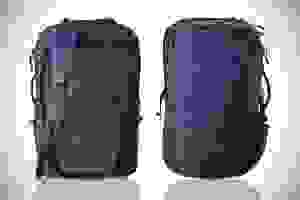
This one is yet another creation in the long, adorable line of things that were invented because people got sick and tired of endlessly having to deal with things that sucked.
This Kickstarter-backed project came about when two long-time travelers decided to make the pack they would have wanted. They set out to create the perfect travel pack for digital nomads, and its design (and Kickstarter success) just goes to show how rarely some of the major players stop to think about the needs of backpackers.
The Minaal has all of the major features you’d expect, including the fully-opening main panel, a separate laptop compartment, hide-away straps, locking zippers, multiple grab handles, and carry-on dimensions, even for the stricter European airlines. It has a few exterior pockets and internal dividers as well, along with a removable rain cover, and a removable, padded hip belt. It’s lighter and simpler than some of the larger packs, and it’s part of the reason I think this relatively minimal level of strap cushioning is kind of all you need at this size. The water bottle pocket is pretty tight, but there’s an elastic band in there that’ll hold taller bottles in place if necessary.
The pack is light, but also unstructured; packing cubes are definitely helpful here, especially since the main compartment tends to flop around quite a bit when you’re trying to pack it. The back panel isn’t too rigid either, so to keep it from sagging, using packing cubes and tightening the compression straps would be a good idea.
Get one here.
Update: This bag is now in version 2.0, and is even better than the original! They’ve sent me a test sample, and I’ve written about it in-depth here.
6) Cotopaxi Allpa 35
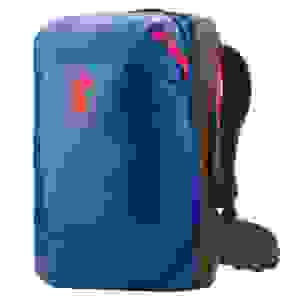
For those who love travel, but only in Punky Brewster colors. But don’t worry, it also comes in black.
This is a relatively new offering, but it does quite a few clever things that look great; it opens up like a suitcase, but splits the gear in half, rather than simply opening with a flap. It has a separate laptop and tablet sleeve, some exterior pocket access (including a way to access the main compartment without pulling open the main zipper), and a neat theft-prevention trick of leaving the zipper pulls on the opposite side of a webbing loop, where they’re hard to yank without fiddling with them a little.
The pack also has a number of optional accessories, such as an external mesh water bottle pocket, to add some customization. The extremely curvy shoulder straps (which tuck away when not in use) are also angled properly for smaller people with more angled shoulders, which I think is actually most people. It even throws in a rain cover, and the price is extremely competitive. I like the way it splits up the main compartment, giving you even more organization instead of using just one big space for everything, and also how it allows you to access those areas without opening up the main zipper. Plus it has those mesh doorways to keep everything in place, so you won’t make a mess even if you need to open up the main compartment. I suppose it could use a bit more mini-organization for pens and cards, but that’s about the only issue I can see.
The lower-right picture shows the pack with optional accessories, like the daypack and laundry bag, available separately.
Get it here.
7) Gregory Border 35
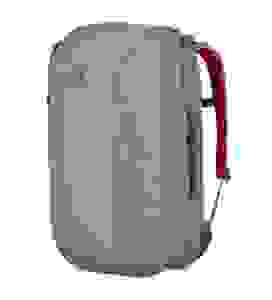
So Gregory is primarily a hiking pack company, and not as widely known as some of the bigger names in the industry, but whose packs I think are designed better than many of its competitors.
Their Border series consists of urban/travel backpacks, and this 35 liter version has not only a full-length panel-loading main compartment, but also a full-length panel loading laptop compartment; this means you just unzip and unfold this compartment, and lay it down on the airport security scanner, rather than removing the laptop at all. It’s quick and easy, and makes airport life just a little more convenient. The several exterior compartments allow for quick access, although there’s not a huge amount of organization here.
It’s missing a couple useful features, however. There’s no hip belt, no side water bottle pocket, and you can’t stow the straps away to use it as a suitcase (although it does have side carry handles). At 35 liters, you might not have to deal with checking the bag, but keep it in mind. Think of it as a budget version of the Minaal. The overall layout is similar, but it’s missing a few of the extra details. Without a hip belt, this’ll work better for larger people, or those who don’t plan on walking around too much with it, such as those who prefer taxis instead of hauling gear across town.
Option 3: Convertible shoulder bags
These options transform from backpack to shoulder bag, so you can carry it whichever way you want.
8) Tom Bihn Aeronaut
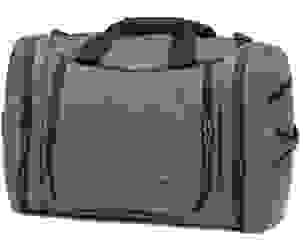
Tom Bihn is known for exceptional attention to detail, tiny little organizational perks, and super tough materials. They tend to win over fans for life, and that’s how long their bags seem to last, too. Many of them end up collecting the whole set.
They also provide far more compartmentalization than most other options; instead of one big compartment and a few extra pockets on the outside that are really just flat slots, they tend to have multiple three-dimensional areas, for splitting up large items, and not just little ones.
Pictured is the Aeronaut, a convertible duffel bag with disappearing backpack straps that zip away when you don’t want to use them, along with an optional waist strap, and an optional shoulder strap for shoulder bag mode. The main compartment opens up with a U-shaped panel, allowing for far more convenient loading and unloading than a typical straight-zipper duffel would allow, and the spacious side compartments on either end allow for plenty of organizational access, even for large items, without having to open the main section. The 45 liter version is a full-size pack, but it comes in a 30 liter version as well, for those strict European carriers.
Though it has plenty of compartments, it doesn’t have anywhere specifically intended for a laptop or a water bottle, though you could easily find homes for these somewhere in the setup. Also, keep in mind that the optional hip belt is just a strap, so it’s better for shorter walks. I tend to think of this design primarily as a duffel bag, with the option of backpack straps if necessary, but with the minimal hip belt and non-meshy back panel (which is just the regular exterior fabric of the rest of the bag), I’d try to avoid all-day use while in backpack mode with this one.
Get it here.
Update: I got a chance to test the smaller version of this bag (30 liters), but the features are identical, so if you want to see a ridiculously detailed review, take a look here.
9) Patagonia MLC
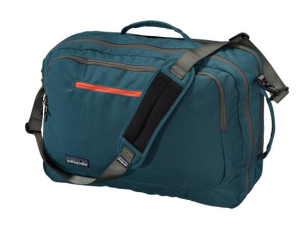
The MLC stands for “Maximum Legal Carry-on,” and thus it’ll give you plenty of room. It opens up all the way like a suitcase, but splits the cargo in two, storing some of it in the “door.” This keeps things more organized than a standard compartment, especially for dividing clean laundry from used clothing. Exterior compartments round out the organization as well.
It has carrying handles, a shoulder strap, and backpack straps, a laptop compartment, and Patagonia’s ironclad guarantee. It’s a solidly built carry-on that’ll last you for years. I will say that because it’s primarily designed as a shoulder bag, without a mesh back panel and no hip belt, that it’s better to think of this as a shoulder bag than a backpack. You might be fine carrying it through an airport for a little while, but you probably wouldn’t want to go on any long walks or hikes with it. It does have a sternum strap, so that helps, but I wouldn’t think of it as a dedicated backpack.
This model is known as the “Headway,” although they have another version known as the “Black Hole” MLC, with a super weather-resistant fabric.
Pick it up here.
Option 4: From the outdoor world
These last few options are from outdoorsy companies, whose travel-specific options are also pretty solid.
10) REI Ruckpack 40
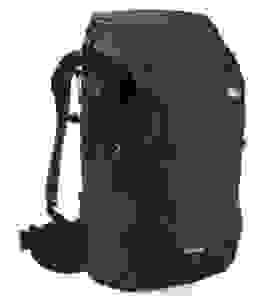
REI has had a place on this list for quite some time, although they’ve changed things up with new models every so often; the current incarnation of their travel pack is the Ruckpack 40, available in both men’s and women’s versions.
The Ruckpack is geared a bit more toward the outdoorsy crowd than digital nomads, with super-tough straps and a giant hip belt, but no laptop compartment. There’s a hydration bladder sleeve that could double as a laptop sleeve, but you’ll need to bring your own cushioned sleeve if you want protection. That’ll work, but it’s definitely more outdoorsy than tech-oriented, especially since it throws in a rain cover.
Still, it’s (nearly) a full-size pack, with a serious suspension system, which is easily its best feature, especially compared to some of the other minimal packs that are more for airline transportation than long hikes. It also has easy access from both the top and the fully-opening front panel (integrated together with a single zipper), and plenty of exterior organization, including small pockets for lots of small items. Those outer pockets do have a compression strap over them, which is a little odd, since it limits accessibility, but it’s a minor safety feature as well, since it’s just a bit more fiddly to deal with than just a zipper.
It’s just a bit too tall to be a carry-on, but the good news is that the top pocket squishes flat, so that’ll bring you into compliance with strict airline requirements, as opposed to some of the other, more rigid designs that don’t allow this. And if you do check the bag, the straps tuck away.
Get it here.
That’s the men’s version, but don’t forget there’s a women’s version there, too (and for a much lighter but otherwise similar pack, check out their Trail 40).
11) Osprey Farpoint 40
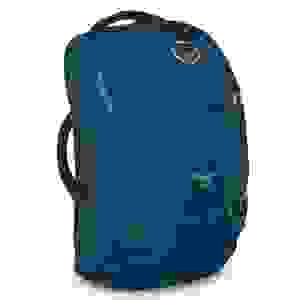
So I’ve decided to add this to the list, as it’s a popular pack with a great reputation, and it’s definitely worth checking out. It’s just that it does a few things that annoy the hell out of me, as is the case with all Osprey packs, but I’ll get to that in a minute.
First, the good: It’s a carry-on sized backpack with a full-length panel loading design, a dedicated laptop compartment, and hide-away shoulder straps. And those are good shoulder straps, and the waist belt is great, too. They really didn’t skimp on this feature, and it’s also available in two different torso length sizes, so it’s definitely going to be comfortable. And by the way, it’s probably going to be significantly more comfortable than the Osprey Porter 46, which is incredibly similar, but comes in just one size, and with daintier straps. I like how it has an organizer panel on the front, and its compression straps flatten things down by closing its semi-rigid sidewalls, which is a clever way to handle things.
And now, the bad: Osprey never ceases to amaze me with their insistence on using non-stretchy mesh water bottle pockets, with compression straps that go right over the pockets to make them a million times harder to use. I really don’t get it. I also find it to be something of a nuisance how the compression straps block access to the main zippered compartment, meaning it’ll be kind of a hassle getting into and out of the bag. The Farpoint has small external pockets, but the big ones are stuck behind the straps, in a way that annoys me a little more than some of the other packs listed here.
Still, it’ll definitely work, and its hiking pack pedigree means it’ll be a comfortable pack to carry. Another odd, but workable feature is how it carries the laptop on the side farthest from your back. I initially didn’t appreciate this feature, but as laptops become smaller and lighter, the weight distribution is less of an issue, and it protects it from getting squished between your back and the rest of the load.
Get it here.
(You’ll notice the larger versions have a detachable day pack, but not the 40 liter version)
So what makes a good travel pack?
You’ll notice that these packs generally have a number of features in common, some of which I mentioned as necessities, and some of which are easier to see once you line them all up in a row. These are the features of a good carry on backpack ideally suited for travel:
- Carry-on size: 45 liters is plenty for lifelong, indefinite travel all over the world. I did it in 20. You can do it in 45. And if you still want the “extra” pack for quick day trips, consider a compressible one. By the way, keep in mind that certain regional European carriers have stricter limits; 35 liters will likely be fine for them.
- Hide-away straps: But if you do want to check a bag, you certainly can. The straps tuck away so they can’t get snagged or damaged, which is also useful for stuffing them into overhead bins or under a seat.
- Multiple carrying options: You’ll notice each of these packs has at least two handles, always in the same place; the top, and the side. This allows you to carry it like a briefcase, or pull it out of an overhead bin. Plus, the aforementioned backpack straps and occasional messenger bag straps let you carry them however you feel like it.
- Internal compression straps: You pack the bag while it’s flat, then turn it upright. The compression straps keep everything stuck the way you packed it.
- Minimal external compression straps: No dangly silliness to get stuck on whatever. They’re useful, sure, but dammit, why don’t the hiking companies have the dangly end hang on to something so it doesn’t dangle?
- Laptop compartment: Our lives exist in the digital ether. I’ll tell people to skip the laptop if they’re not going to use it, but digital nomads need it, and most people will want one anyway.
- Locking zippers: It’s just that easy to keep your bag protected. Other bags have steel mesh reinforcements throughout the bag, but…the cost/benefit ratio isn’t so ideal. Locking zippers are easy, and hugely helpful (though I’ve recently seen techniques to bypass the lock, so I’ve softened on this as a requirement).
- Flat packing: The whole thing lies down so you can pack it like a suitcase. This is incredibly useful. I don’t know why it’s so rare in the hiking world.
Potential areas for improvement
I do, however, have some problems with certain aspects of carry on backpack designs. Now remember, I’m a nitpicky bastard that can never be satisfied, but dammit, it’s because I’m right. But keep in mind these are issues worth thinking about, rather than deal-breaking problems.
- Minimal hip straps: Transferring the load to your hips makes a huge difference. It’s the difference between “I need a massage” and “let’s go party.” For large, muscular specimens of masculinity, this is probably not such a big deal. It’s also easy to manage if you go straight from the bus station to the hostel, but I’ve often found myself wandering around town with my pack, and it’ll probably happen to you sooner or later as well. It would be nice to see detachable hip straps as an add-on option, though as mentioned, a few of the above options (Tortuga and REI Vagabond) have more serious hip straps than the others, and a simple strap can go a long way in improving the comfort of smaller gear setups.
- Minimal ventilation: This is another problem that arises from longer walks. If it’s winter or you don’t sweat much or you’re going straight to the hostel, good for you. If you plan on walking around for an hour, it’s going to be an issue. I’d normally say the trampoline-style back panel is great, but it’s tough to recommend it for the problems these packs are trying to solve. These packs are supposed to go through luggage checks with no problems, and the trampoline back would need to be protected in order to accommodate that. However, a raised lumbar pad and raised shoulder blade pads would go a long way in diminishing the ventilation problem, without sticking out too much.
- “Water bottle pockets” that don’t fit a water bottle: I’ll start by pointing out that most of the options above are fine in regards to this problem, but I will never stop complaining about inadequate water bottle pockets, because goddammit where the hell do they go?!?!
But again, these are just potential problems. The hip strap issue is likely the most objectively serious, and it’s definitely something to think about if you expect to be walking far and wide on your worldly adventures.
But, all in all, I like these designs. I also like the existence of these designs. I expect carry-on, hybrid packs like these to become increasingly popular, because they’re so efficiently designed to accommodate the needs of lightweight travelers who still need backpack straps, and once you get one…you’ll never need anything else.

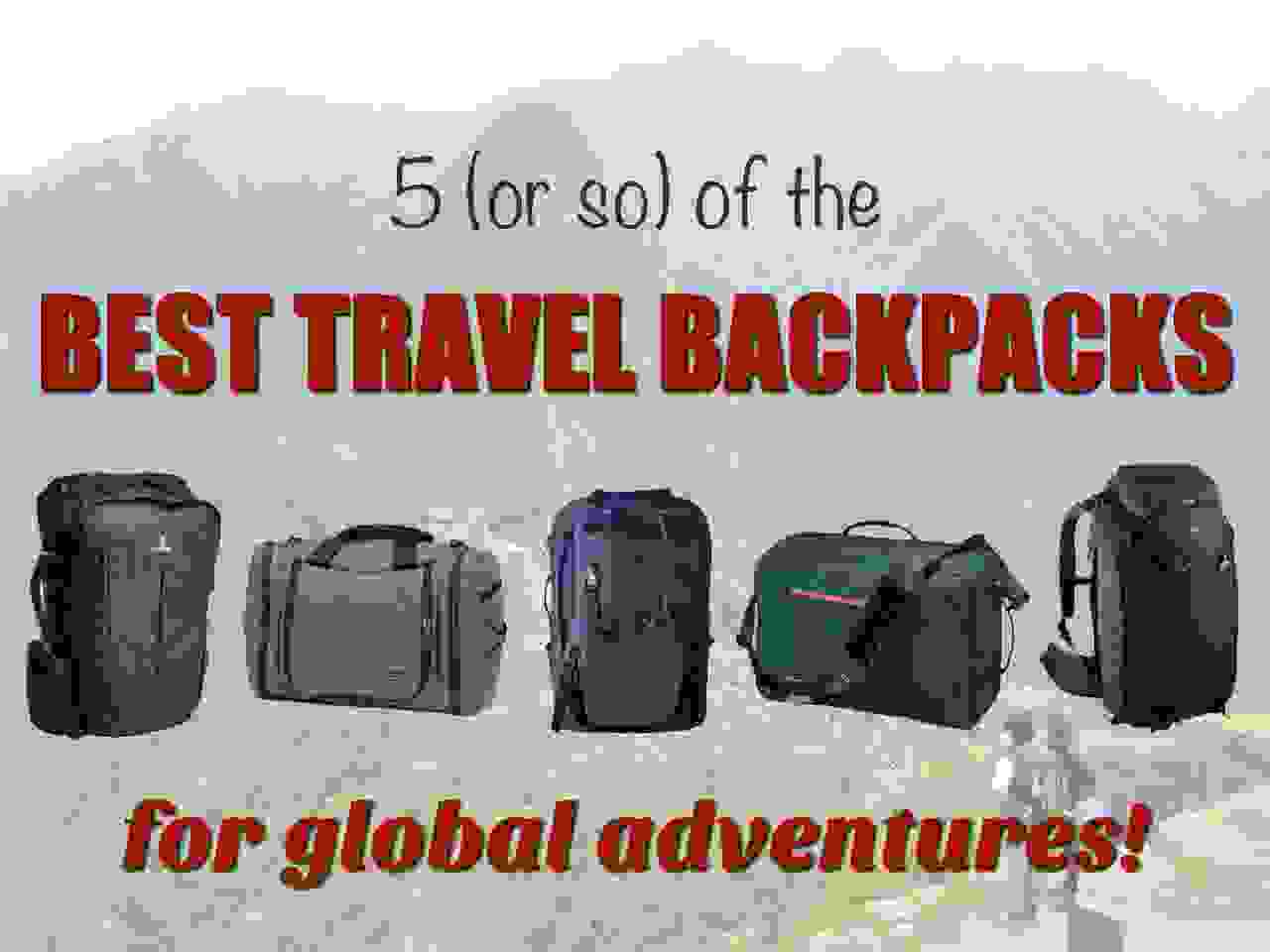
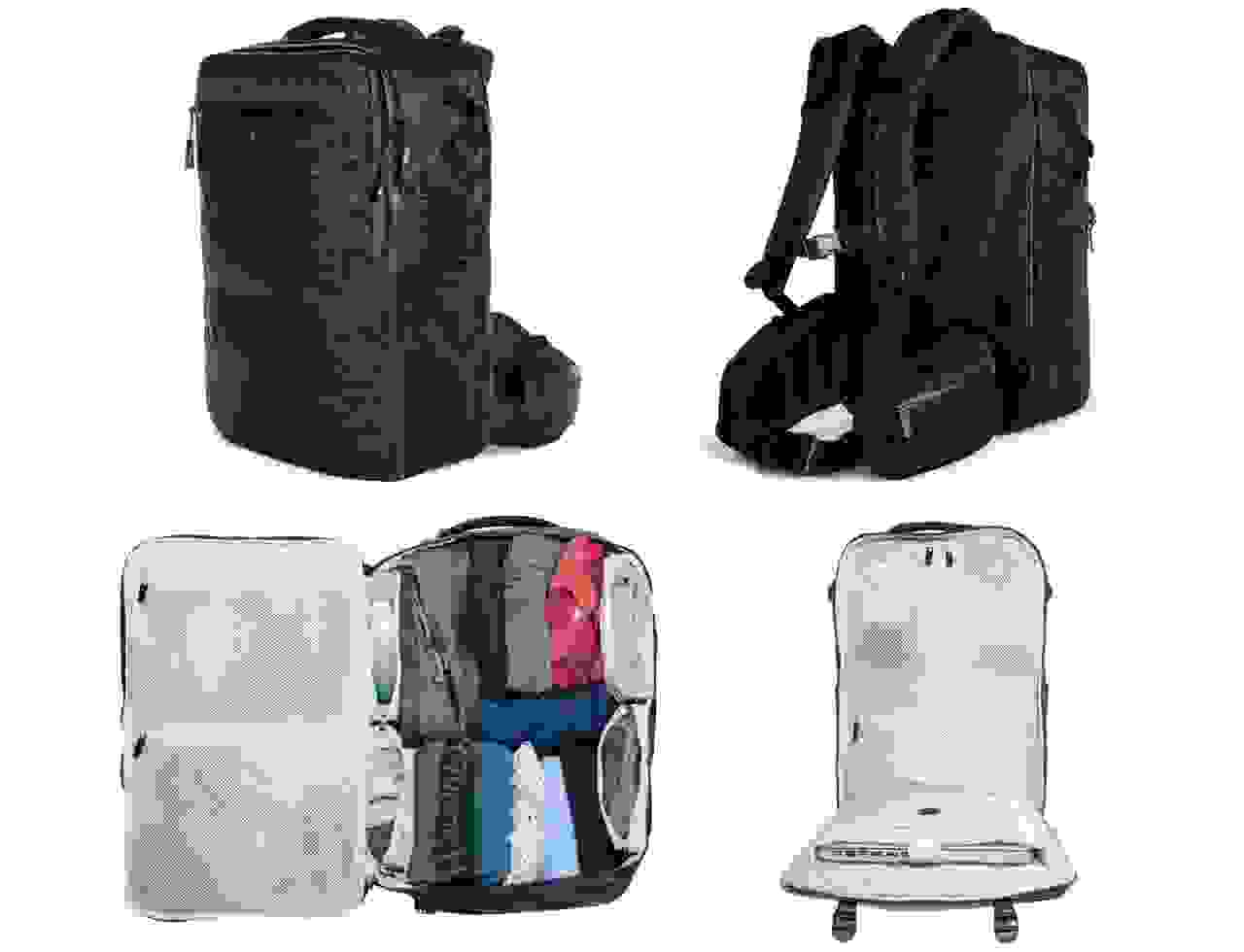
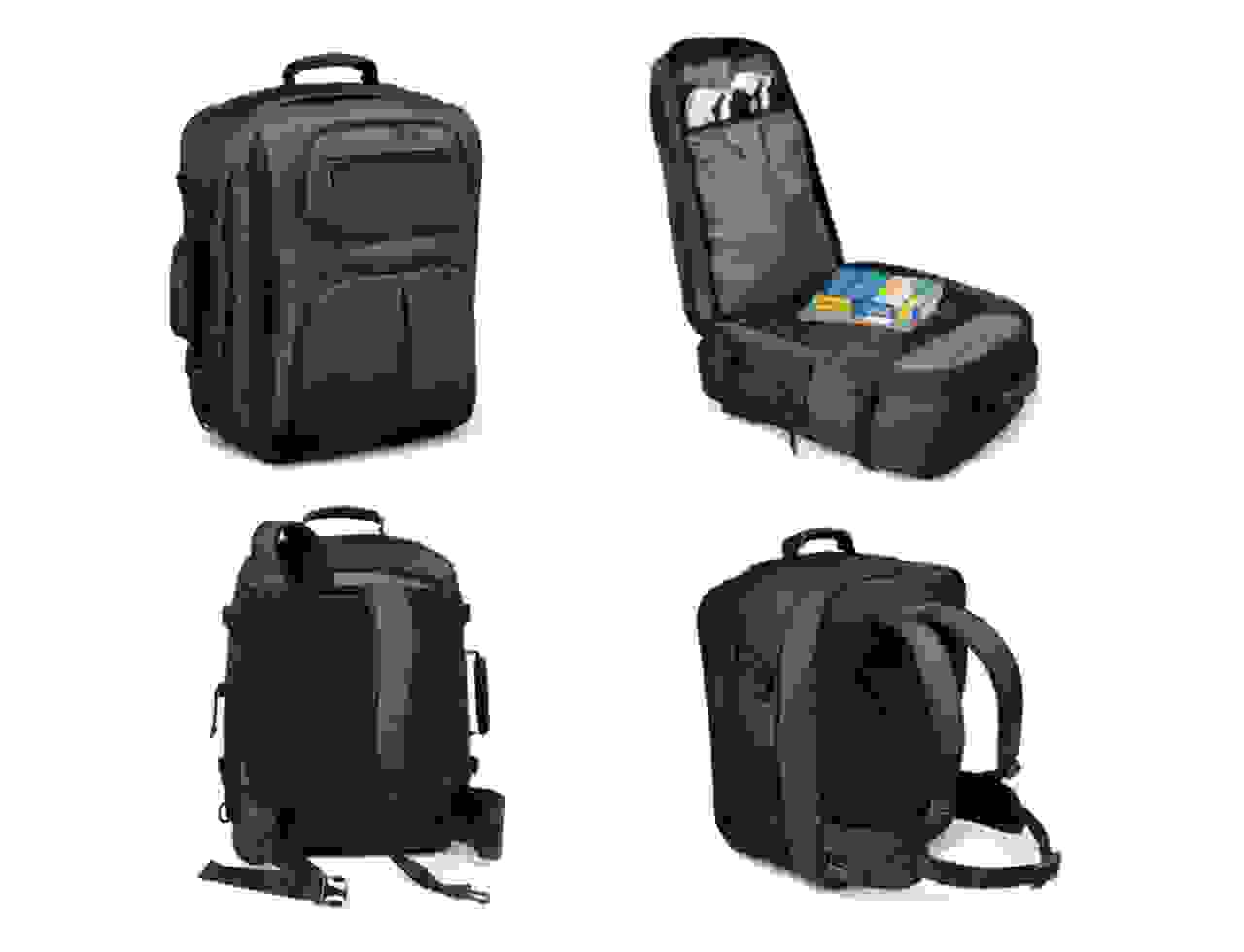
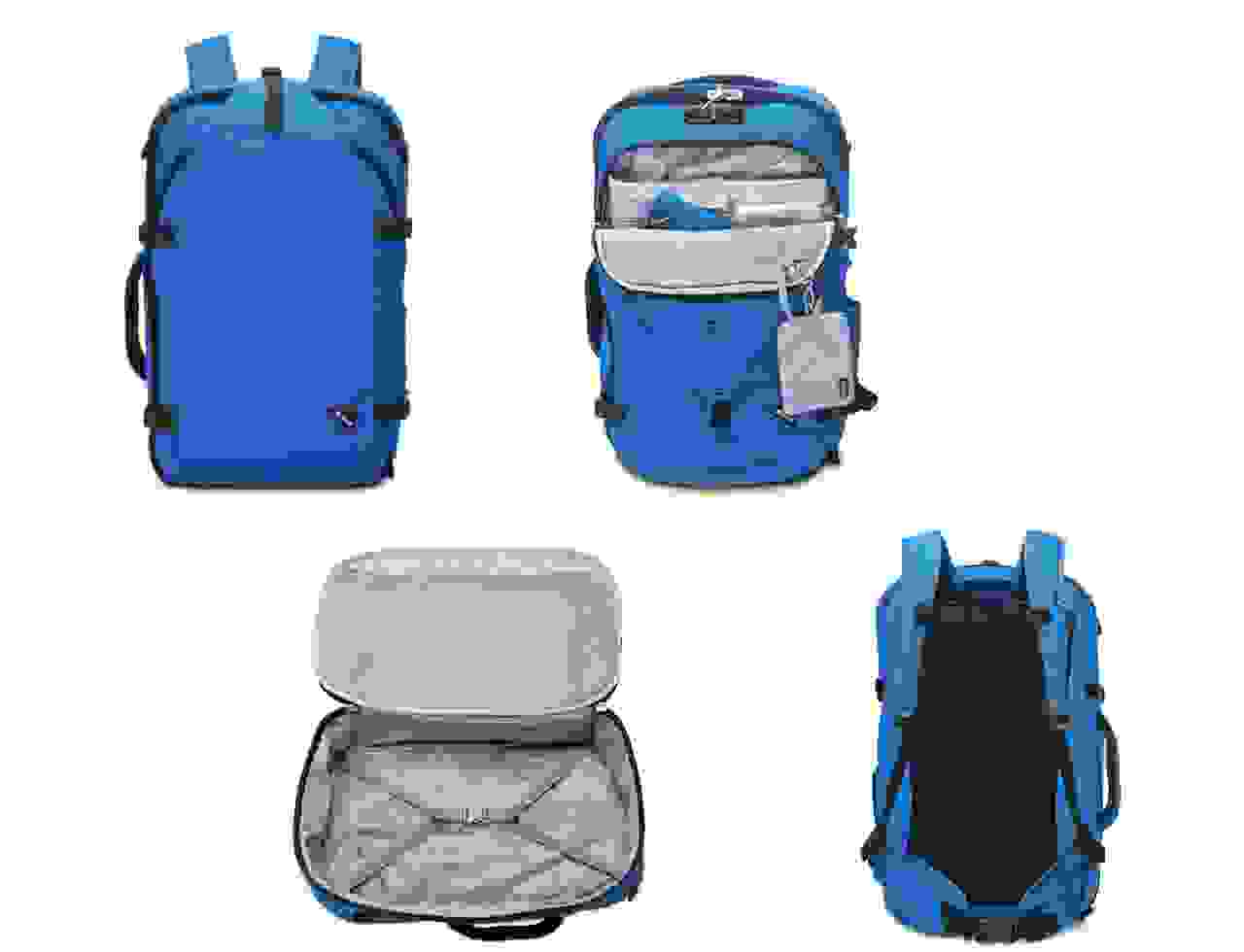
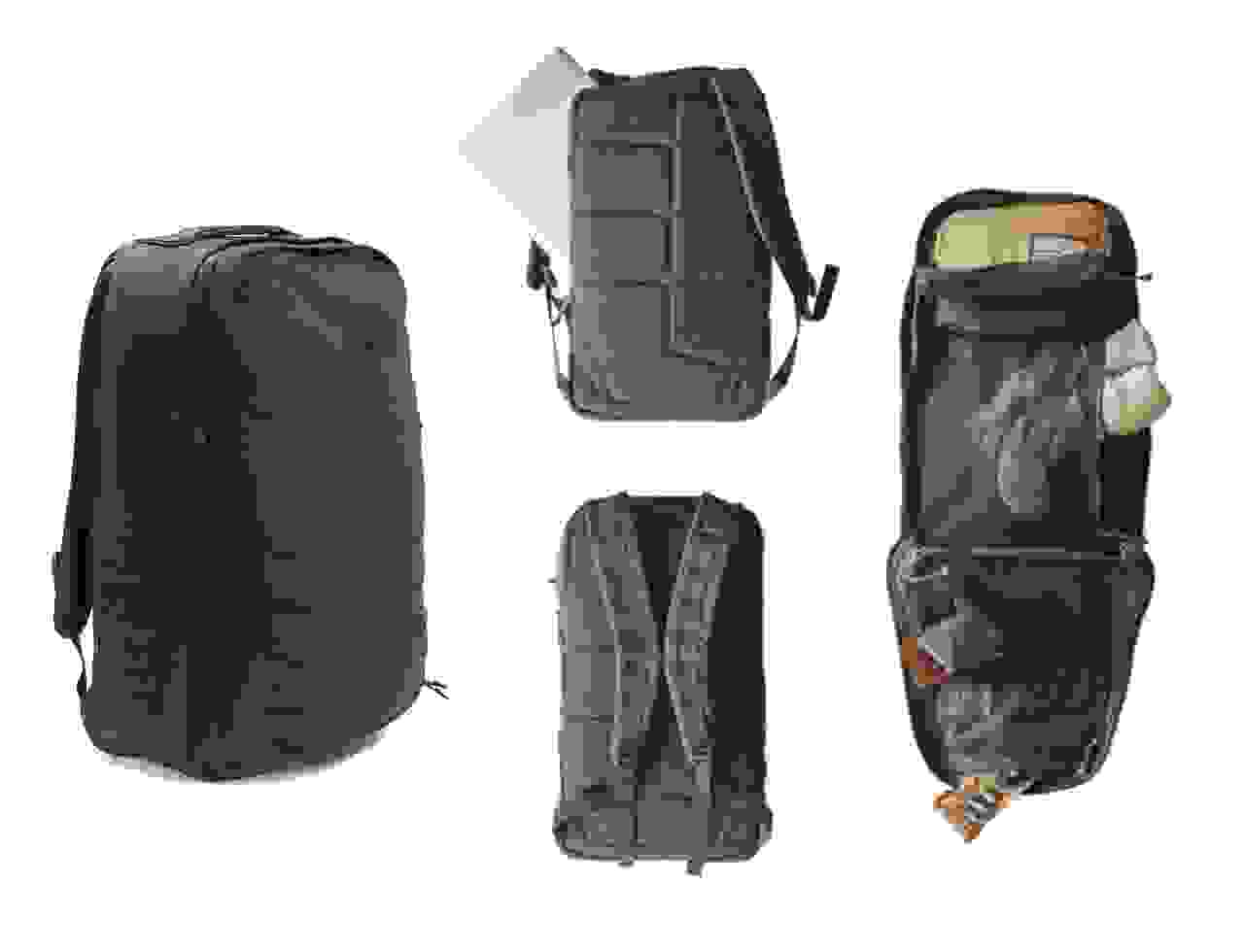
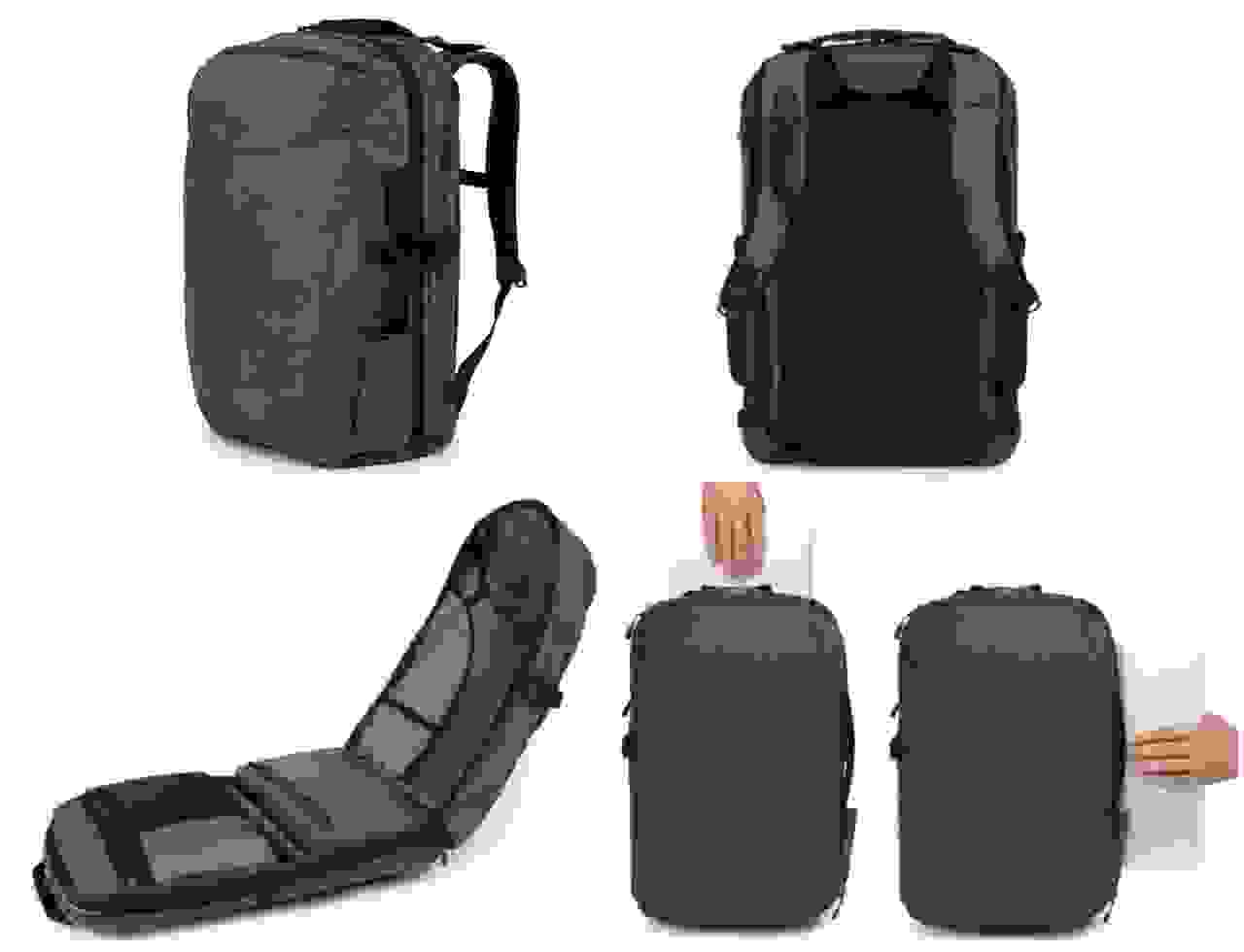
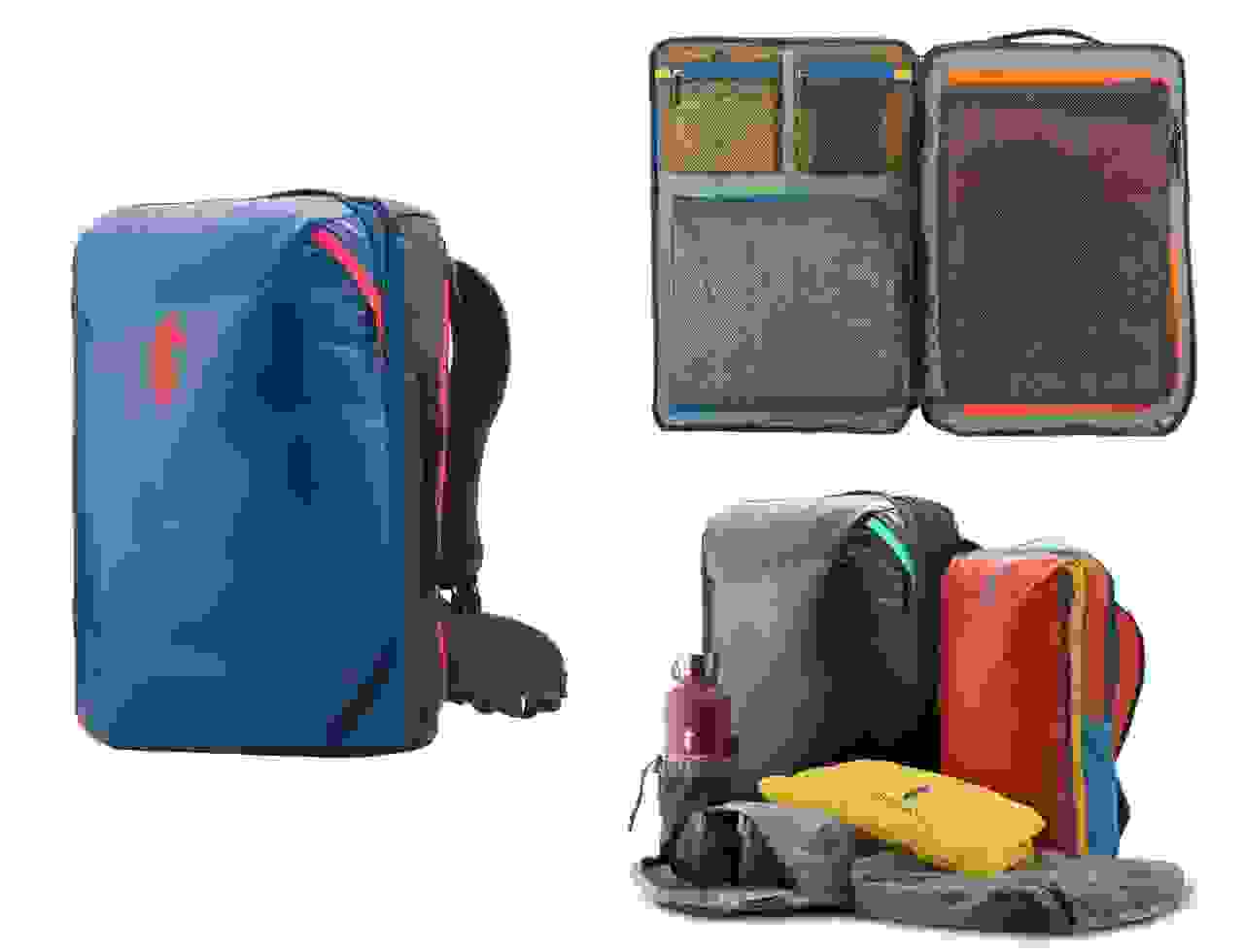
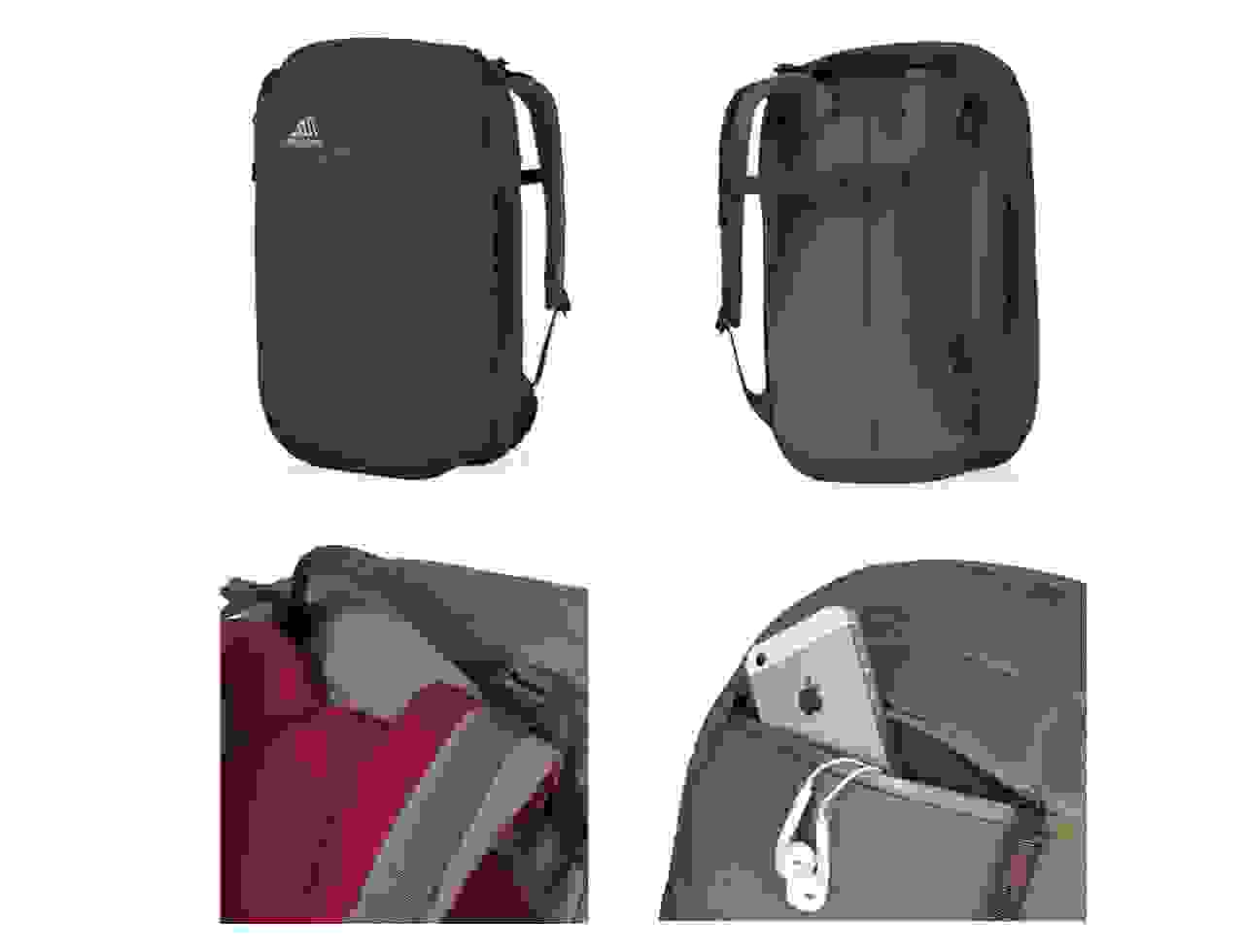
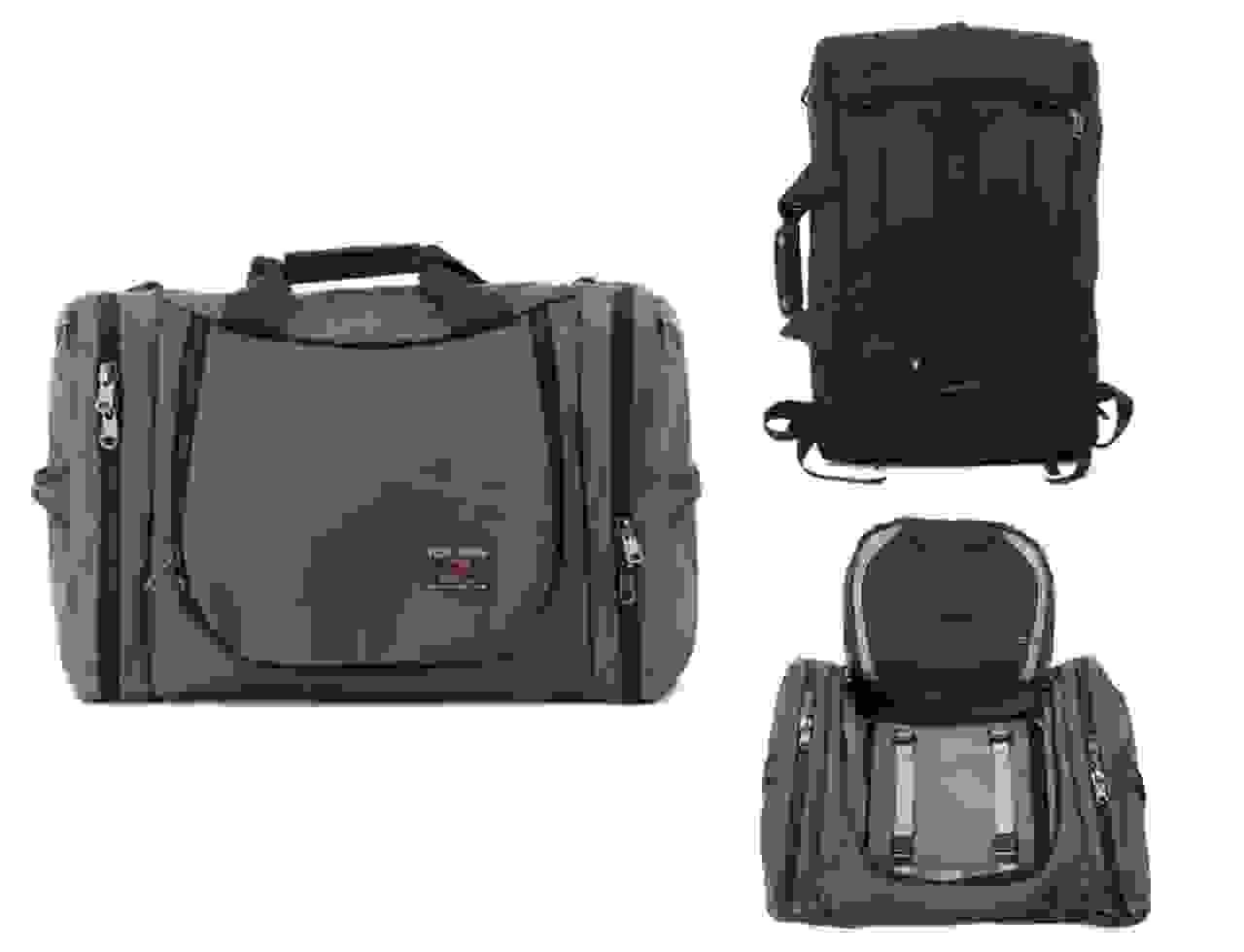
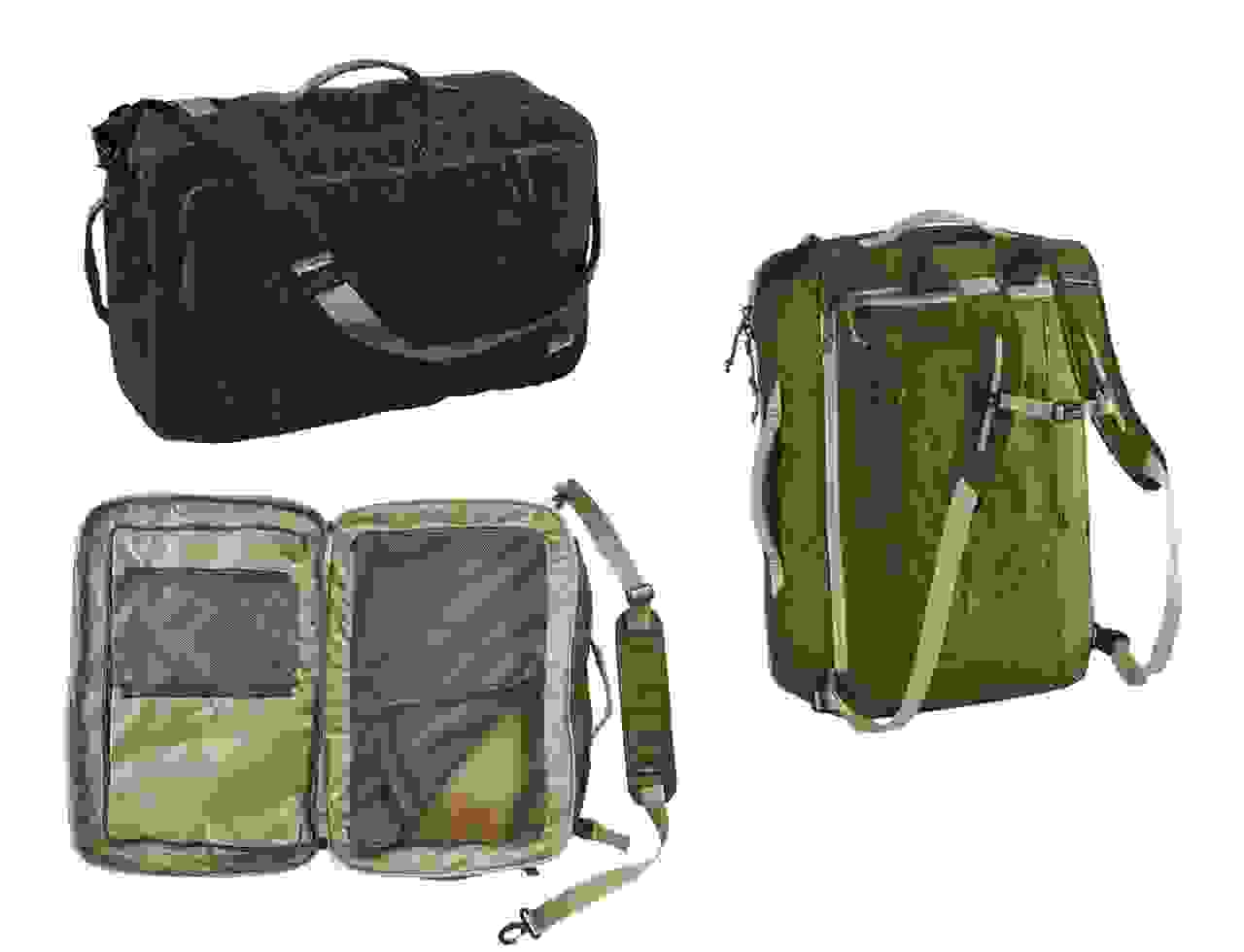
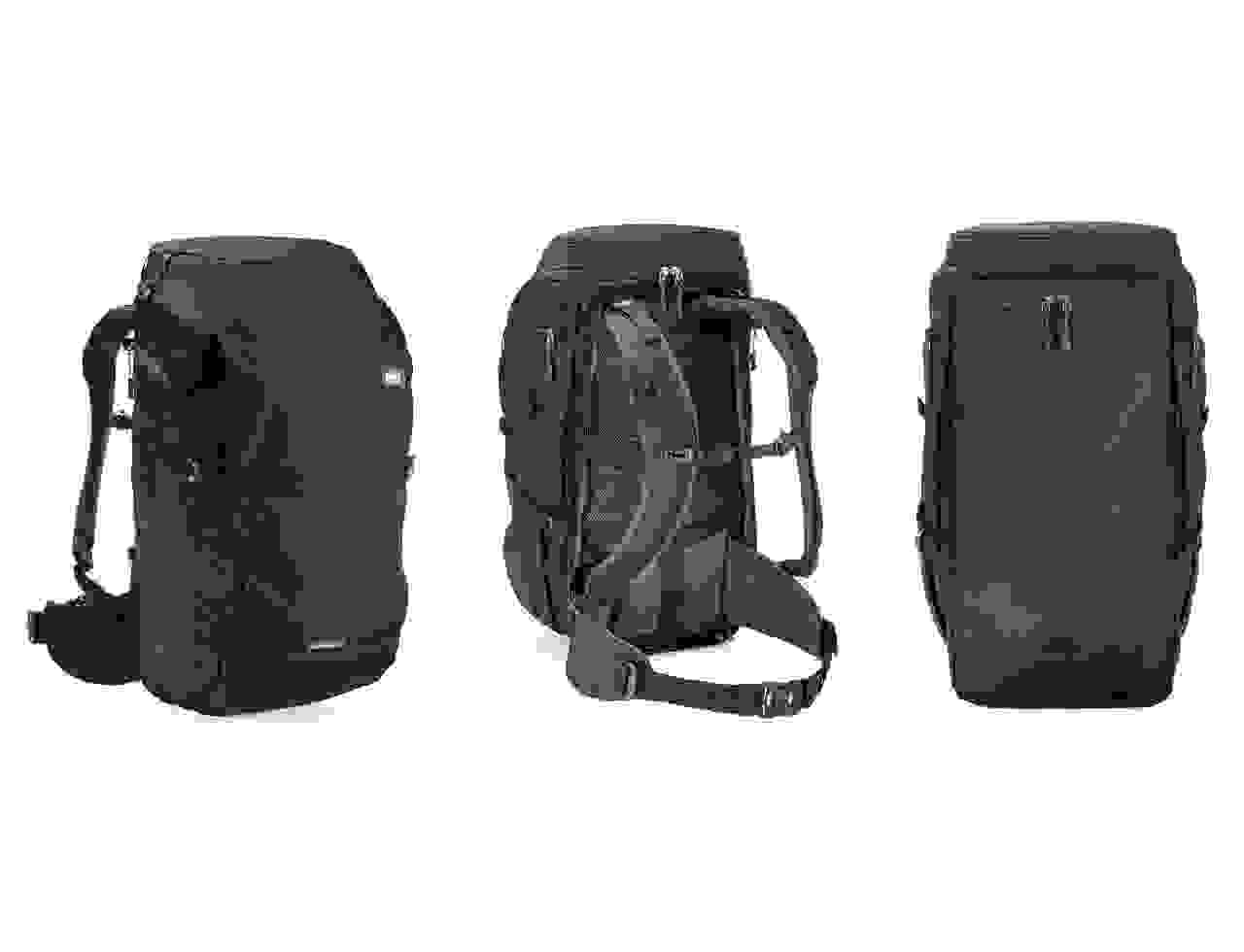
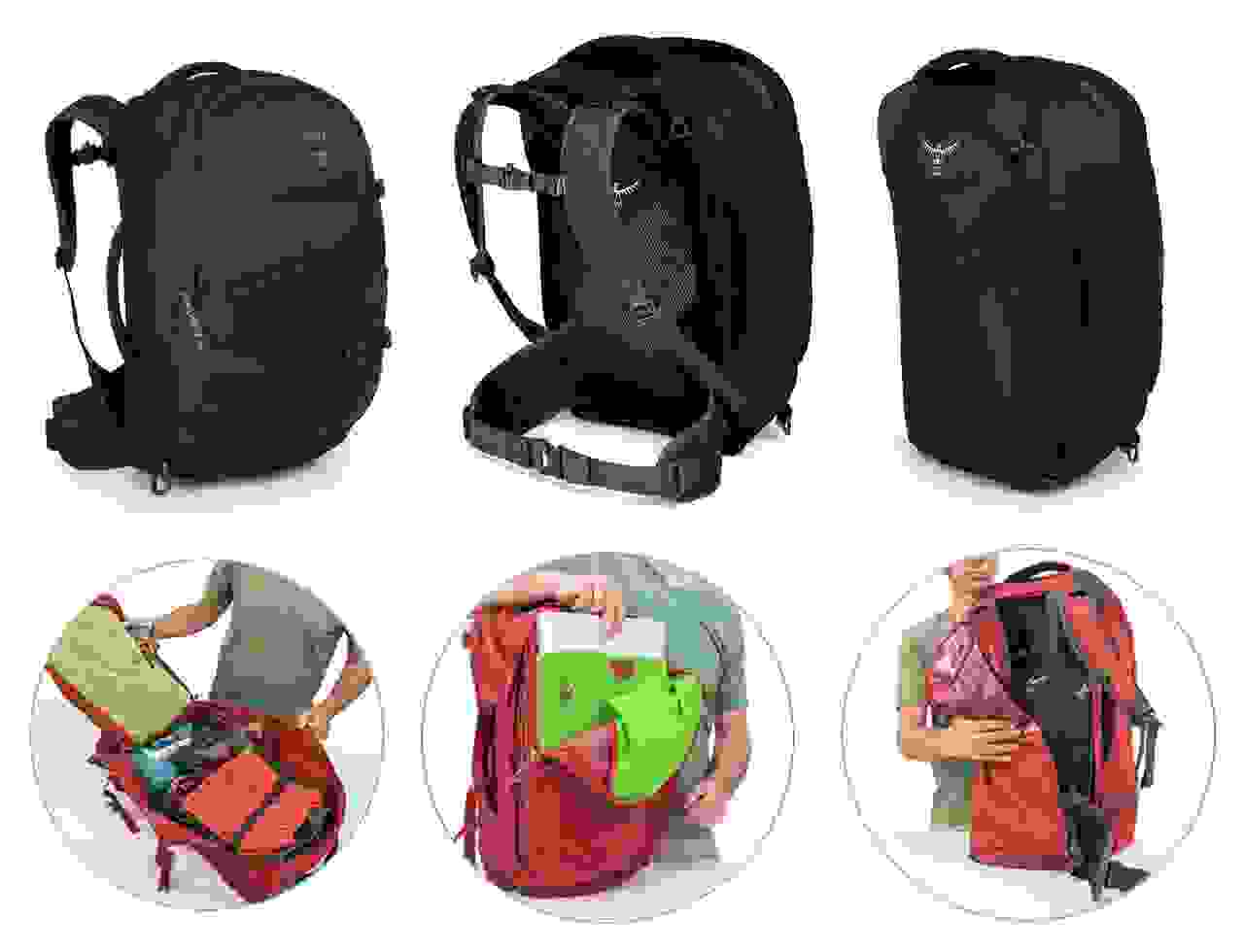



Just bought the Minaal bag, excited to see how it works for India and Nepal.
thanks for a great and lengthy discourse on RTW bags.
Love your blog! I too, am on the constant search for the perfect pack. I was given an old macpac genesis 70 and was wondering if you have any thoughts on this pack?
Thanks!
Well, I like all sorts of features (as long as they haven’t changed from your older version), such as the hide-away traps, so you can send it through as a checked bag, and the full zippered opening so you can open it up more easily than just from the top, and the optional shoulder strap, but it’s definitely huge. I always encourage people to bring only what they need, and I think 45 liters is a good target that anyone can handle, and it’ll put you within most carry-on limits. But with all those compression straps, you could easily tighten it down to a smaller capacity, which will probably work nicely. So it’s good, but it’s big.
Thanks so much! I’ll try it out…it was free, so I can’t complain too much. Thanks again.
Osprey answered my prayers and put out a 30L version of the Porter. I used the 46 for years and loved it despite the fact that it wasn’t very comfortable to wear as a backpack for long periods of time. They seemed to have fixed that issue. The 30L version is deceptively large, light, has a frame, and fits even better in overhead compartments. Still has the cavernous main compartment and lockable zippers but now with an added laptop/tablet pocket and organizer thingy built in (which I just use as a mini file cabinet for itineraries and boarding passes). Was stuck between a Synapse 25 and a Porter 30 for my recent trip to Egypt/Jordan and so glad I went with the Porter.
I am leaving on a 5 week trip to South America this winter. I am not hiking a lot but we will be taking some day hikes whenever possible in Peru and Chile. Which bag would be best suited for this purpose? Will Tortuga work?
For day hikes I’d recommend bringing a second, smaller pack, hopefully one that can fold down as flat as possible. Tortuga is developing one (not sure if it’s out yet), but I’ve also listed a few packable backpacks here. So it shouldn’t matter if the main pack is a hiking pack, since you’ll be taking the secondary, smaller pack on those days, if it’s just a short day hike. So in that case, just pick your favorite.
Hi
What does everyone think about About the mil-tec molle army rucksack?
It’s dirt cheap.
Could this be the cheapest competent Travel rucksack?
Hey, I’m a product designer and wanted to fill you in on a bit on why Osprey doesn’t have mesh water bottle holders and why compression straps run over zippers…. durability.
Mesh water bottle holders tear and abrade during their lifetime, especially when checked. And the compression straps over the zippers provide a backup in case the zippers break. Which can easily happen when the bag is overfilled or the nylon stitch on the coil abrades and separates it from the tape.
Alright, I can see the issues there, which is why I’ve become a fan of regular fabric side pockets, or just placing the water bottle inside; I just wish those compression straps weren’t so dangly. Getting in and out quickly just for one or two things would get a little tiring. I know they have a front pocket that’s more easily accessible, so that would help somewhat.
Hi Eytan! Thanks so much for putting this list together, updating it, and even responding to comments!! I really appreciate all the advice.
I’m an avid traveler that has always been a fan of traveling with a backpack and not a suitcase, and I have carried my fully-loaded (50+lb) Osprey Women’s Ariel 65L pack all over the place – up and down through the hills of Rwanda, through crowded train stations in Beijing, and everywhere in between. I know you’re probably judging me right now for having such a big pack, but these were continuous adventures that spanned from January in Europe to August in India and included living, studying, and working for 4.5 months in a single place…plus lots of souvenir space. :)
In any case, I’m gearing up for a month-long trip in SE Asia, and definitely want to down-size since I’m going to and from my home in Korea and can definitely get by with minimal clothing. I’m also traveling on many budget airline flights and don’t want to have to check anything. Based on price point and features I have narrowed my options down to the Gregory Border 35 (which I can get at a discount that makes it the cheapest option but close to the Osprey), Osprey Farpoint 40, and Tortuga.
The Tortuga is significantly more expensive but looks pretty fantastic. My main concern with the Tortuga is the minimal suspension system and the comments about it being only okay for a short walk from the airport to the hostel. I don’t travel that way and want to be able to easily carry everything with me on long day/multi-day trips, walks around the city, etc, without suffering major discomfort. Can you comment on this at all?
The Osprey looks great to me as a durable hiking-type backpack that is more specialized for travel, but I’m a little worried about the laptop sleeve on the outside throwing off the balance of the pack and hurting my back, since my laptop is relatively large/heavy. Any experience with that?
In terms of the Gregory, how much of a disadvantage would you say the non-convertible straps are when traveling? Is the suspension/strap system adequate for longer walks in comfort?
Lastly, do you have any comments on the REI Lookout 40 or the Kelty Flyway 43?
Sorry to ask for so much, but you never know if you don’t ask! And even if I only get a couple answers it will be incredibly useful. Thank you again for all of your help!!
I could talk about this stuff all day.
Tortuga: So it doesn’t have a “real” frame, but once you stick a laptop in there, it does. It also has a serious hip belt and shoulder straps, so it should be good. The Osprey comes in multiple sizes, so it might offer a more exact fit, but unless you’re really large or small, it should work nicely. The backpacks that I recommend for shorter walks are the ones without a hip belt, so if I made a mistake somewhere, that’s what I should have said. Any hip belt is good, and a padded hip belt is even better, which the Tortuga has.
Osprey: This pack does a lot of things that annoy me, and sticking the heaviest item as far away from your back as possible is just plain weird. I have no idea why everyone thinks of Osprey as the undisputed champion of backpack design when they do silly things like this. It’s not THAT horrible, but it’s still just objectively wrong. Combine that with the straps that cover everything, and it just seems to have one too many annoying things going on. Plenty of people are happy with it, but I think they get less annoyed than I do about these sorts of things. I personally wouldn’t consider it, but felt the need to discuss it here, as it’s frequently mentioned, and isn’t particularly terrible, but still weird.
Gregory: I like Gregory quite a bit. I mention them whenever anyone talks about how much they love Osprey. I haven’t used this particular pack, but the suspension system on the pack I had (an old model of what they call the Z30) was GREAT. And there’s a lot going on in this pack that I like. I would have liked a side pocket for a water bottle, but nowadays I put the water bottle somewhere on the inside of the pack, which is also important for plane rides, which means you have to budget the space anyway. I also wouldn’t worry too much about the non-storable straps. The only time you need storable straps is if you check the bag, and since this is only 35 liters, you probably never will. It’s kind of nice in the bags that can double as shoulder bags, but since this one can’t do that, you’ll probably never feel the need to put the straps away.
Both the REI Lookout 40 and Kelty Flyway 43 are too big to be a carry-on. You can probably get away with it by packing it properly (especially in the case of the Flyway, since it’s softer), but it’s still an odd oversight which I don’t understand. Also, Kelty packs have some of the most horrifically uncomfortable straps I’ve ever used. The Flyway is slightly different from the specific packs I tried, and of course body types are different as well, but I would definitely recommend trying to find it in a store to try it out, because they just drove me absolutely insane.
So out of the options available, the Tortuga and Gregory are quite nice. The size difference would probably be the major thing to consider.
Firstly, I love your site! Over the course of my travels I have been getting progressively lighter and the information you write has been really helpful. When I started out at 18 I was carrying a 80 liter monstrosity. Since you’ve said that you wonder what people put in those I’d consider telling you if you promise not to laugh ;) Something I did want to mention in the way of packs though is a more feasible option for adventure/outdoors travelers. I, along with many others, enjoy really roughing it while travelling (i.e. camping, multi-day treks, trail running, hitch-hiking/walking cross country, mountaineering, rock climbing, skiing, etc.).
For this type of travel packing light is essential, obviously. However, having a proper pack is also extremely important and some of the features of “travel packs” detract from their practical usability for more active pursuits. A lack of hip belt seriously compromises stability and comfort; fewer dangly straps and wider, thicker designs decrease pack awareness and load stability; the burly designs mean that some of these bags pack on extra weight (pun intended) and weigh in at well over 3 pounds; fewer exterior straps also complicate things when you need to lash a sleeping bag, trekking poles, a tent, climbing gear, skis, or other gear to the outside of your pack.
For a long time I have looked for a pack that could do it all. I wanted one bag to be by one and only carry on bag for traveling, comfortably haul my outdoor gear at home or when I rent it abroad, sit inconspicuously on my back when at home in Seattle or in foreign metropolitan areas (by not being brightly colored or looking too much like an expensive backpacking pack), and carry work things during the daily riding commute. I thought the task was impossible, I was asking too much of a bag, until one day I found it, the Muir Woods 30 by Boreas.
Let me say right off the bat it doesn’t quite reach perfection but it comes pretty damn close. So it’s a 30 liter pack, which I think is a great size. It offers a little more room than a school sized 25 liter computer bag and the compression straps secure it if you are packing really light. The compression straps also act as “ribbing,” which gives the pack structure, and are well sized, so they’re not too dangly even when almost fully cinched.
The pack was a removable internal frame, so if you want to cut a couple ounces from an already fairly light pack (2 lb. 5 oz) you can. The internal frame along with the wide hip belt provide comfort on the trail or off. The hip belt also has super stretchy pockets ( I love hip belt pockets!) It is carry on size (technically one inch too tall but I have NEVER been blinked at for its size). It looks small and flight attendants never doubt that it can fit in the bins but it carries everything I need and lots of souvenirs on the flight home.
Extra gear loops and daisy chains stow away when not in use. The unique removable frame bends just enough to be comfortable on your back but doesn’t keep the pack from lying flat. The huge zippered main compartment opens almost all the way up. The foam back panel has AMAZING air circulation. The water bottle holder is stretchy and deep. Admittedly their is a compression strap across the water bottle pockets, something I know you hate, but it really isn’t that much of a hindrance and actually aids in holding the water bottle in place during high intensity activities.
There are multiple haul points on the bag. Finally one of the best features of all: It doesn’t look half bad. The black version that is. There are a couple different colors just as horrendously bright as all the other backpacking packs out there but the black one looks like an urban style pack. I blend in a lot better both in Seattle and in other big cities with this pack than with other backpacking packs I’ve used for travel. More than once I’ve been stopped in places like London, Paris, and Istanbul and been asked for directions in the countries’ native language while looking around for my hostel or next destination with this pack on. Of course I also chalk that up to my impeccable fashion sense.
I could seriously go on about this pack for paragraphs and paragraphs yet but I don’t think there is any point in beating a dead horse. I would say all this on my own blog if I had one but I do not so alas you must endure this long-winded exaltation. Though not perhaps by your standards the best “travel backpack” it is BY FAR the best “adventure travel backpack” that I have ever used, seen, or heard of. Check it out and let me know what you think, or let me know if you think you know of a better alternative because I would kill to know about that bag.
Sounds like you’re quite a happy camper (pun intended). Hiking packs definitely need specialized features, and there’s no reason to abandon them, though that’s part of why I wanted to include the REI pack, because it’s a hiking company trying to do a travel pack, so they included a lot of features you’d see in the outdoors, in addition to travel-friendly features too. Happy to hear someone has found The One.
What do you think about PacSafe’s product? Any insight appreciated. We will be going to Europe for 3 weeks…Italy and Norway.
http://www.pacsafe.com/venturesafe-55l-gii-w-travel-backpack.html
Sonja
They have a good reputation and it looks pretty good, particularly if you’re concerned with bag tampering; this is a recent product, which is why I haven’t given it a mention here, but I expect it would probably work just fine. I’d recommend trying the 45 liter version, as it fits within carry-on dimension requirements, so you could travel without having to check a bag.
Thanks! Yeah there’s not a whole lot of reviews out there for it so I wanted to see what you thought. Thanks again for sharing your knowledge. Helpful to the newbs!
Take care
Sonja
I’ve gone through all these comments and multiple people asked you to comment on the MEI voyageur but for some reason, you ignored all of them. Why?
I wasn’t familiar enough to comment, so I left those questions up in the hopes that other people might chime in with some info. The company’s site doesn’t have much in the way of photography, so it’s a little hard to analyze, though it does look somewhat floppy, and the non-mesh back panel probably won’t be super breathable…I’d also prefer some external pockets besides just a flat one. Those are my impressions just from seeing the pictures.